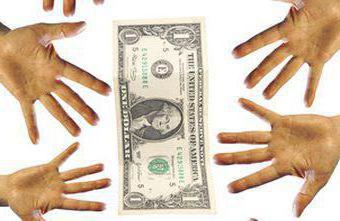The concept of liquidity in economic science implies the mobility of assets, funds, which can ensure the possibility of uninterrupted payment of obligations.
Liquidity is almost a key characteristic in many economic studies and processes. It can be attributed both to a specific enterprise, industry, and in general to the country and even the global market.
In the framework of this article, the concept of liquidity in relation to money will be considered in more detail.
The liquidity of money is the main concept in accounting, financial analysis, management, investment analysis. Since it represents the ability of assets to transform from one form to another without significant financial loss.
The essence of the concept
The liquidity of money is understood as the convenience and speed of turning available assets (property) into cash, which is used for the purpose of subsequent purchases. The total absolute liquidity of money can only be attributed to cash. And then other types of money become less liquid: savings on the card, deposit account with a bank, etc. The conversion of the latter into cash is associated with certain financial losses, so they are considered less liquid.
Properties of any asset in accordance with the concept of liquidity:
- the ability to use this asset as a real means of payment;
- the ability of an asset to maintain, retain its original cost.
Cash is the most direct means of payment, and therefore they say that they have absolute liquidity. Demand deposits have slightly less liquidity. Further, the liquidity level is lower for term and savings deposits, government bonds.

The liquidity factor has a huge impact on the decisions that firms and companies make. Under equal conditions, preference is given, as a rule, to absolutely liquid cash or demand deposits.
It can be said quite accurately that the difference between money and their characteristic feature in economic science is the fact that money has liquidity. Money refers to liquid, that is, easily realizable property. At present, to have liquid assets (money) means to have great opportunities, that is, in the end, and great wealth. The wealth of a particular individual will depend on the form in which at the given moment belong to him property goods.
We give an elementary example. A man wanted to eat in a restaurant, but he only has a bank card with him, which costs 1,000 rubles, and does not have cash. At the entrance of the restaurant it says: "We do not accept cards for calculation." Can this person be called rich at a given time? No, because if the card account was 1000 rubles. less, and in your pocket for 1000 rubles. more cash, then a person would be richer than in this situation.

Disadvantage
Despite the fact that money has absolute (perfect) liquidity, there is a drawback of this fact: the money holder has to lose the income that he could have gained by using an asset with less liquidity. This means that if cash is put into a bank account, they will bring their owner a steady income. However, such income will be lost if the money is kept "at home on the shelf." There are more profitable ways of investing cash, for example, stocks, bonds, dividends, etc.

Cash aggregates by degree of liquidity
In accordance with the liquidity criterion, modern money can be divided into the following main groups in the form of monetary aggregates (indicators of money supply, determined by its liquidity level):
- M0 - money available, demand deposits.
- M1 - M0 aggregate, savings deposits, small time deposits.
- M2 - M1 aggregate, large fixed-term deposits.
- M3 - M2 aggregate, savings bonds, government and commercial bills.

Conclusion
Cash liquidity is the ability to be a means of payment. This fact affects the decisions of manufacturers. For example, organizations and firms favor cash or deposits.